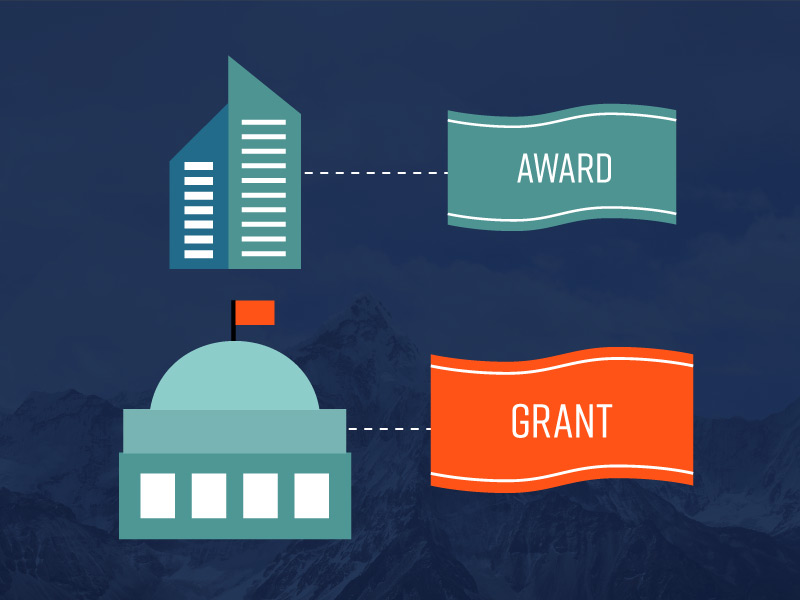Mark and Emile are founders of Steadiwear, where they developed battery-free lightweight gloves to reduce tremors from Essential Tremor & Parkinson’s. They kindly share their success tips in being awarded government startup grants as well as growing the value of their startup before taking on equity investments.
Step 1: Navigate Funding Options
What’s the first thing you would do?
Honestly, join an incubator, or Regional Innovation Centre. Being a lone entrepreneur in your garage does not give you enough access to the opportunities that are out there. There are numerous incubators as governments and schools support entrepreneurship. When your ideas are clear enough to explain to friends, set up meetings with local incubators and find the one you fit. We are part of the Impact Centre now because they have the expertise and labs we need.
But applying for grants is not something all businesses can do. How do we know a business can be eligible to get one?
It’s rare for a service businesse to receive grants. Usually, it’s not for small businesses either. In our case, we are creating an innovative medical device with an IP targeting the healthcare market. You should be able to prove both technology and business cases to be able to receive government grants.
What was your first funding received?
Impact Centre staff guided us to possible funding applications. The first grant we received was SmartStart by OCE. It was a 30K match funding grant. We used all our savings to match this 30K. Be cautious because other grants may ask to have 3rd party matching, which means you either have sales revenue, or other investors’ money to match. Then we received other grants and competition money. Healthcare, especially neuroscience and aging, now has a lot of funding opportunities in Canada.

Step 2: Win Grants
What was your winning strategy to win those grants?
Again, you have to make both the technology and business case for your business. And make the application easy-to-understand for reviewers or judges. Our first attempt to get the grant failed perhaps because reviewers were confused. In our second application, we showed a video of the prototype, and were successful.
Here’s what we did for the business case:
- Intensive market research to identified key stakeholders
- Set up interviews with them (patients, doctors, caregivers, researchers,...)
- Organize stakeholders’ requirements
- Convert the requirements to design goals
This process proves you are talking to relevant people in your industry, pinpointing the real problem and therefore developing a much needed solution that satisfies all key stakeholders involved in the operation.
Another key component of a successful grant application is to present a rational and realistic execution plan. Technical and business milestones have to be well aligned with allocated budgets and timelines.
Also, we should provide the evidence of our technology works as well as benefits people. We working with top notch doctors and researchers to show our technology solves a problem. We are also proud that this tremor reducing technology improves patients’ lives. It’s not just about the elderly. A lot of people with hand tremors lose their jobs. With our solution, they can get their lives back.
Step 3: Get Ready to Scale Up
Where are you at in terms of your manufacturing and sales?
After numerous prototype iterations, we are now beta- testing our alpha prototype. We will manufacture the first batch somewhere close so that we can be more hands on. Then, we will focus on mobilizing our marketing and sales strategy using a 3 tier approach: Online sales, Distribution and partnerships. Networking is constantly happening. We have close partnerships with distributors and doctors in multiple countries.
Which area do you expect will need significant funding?
IP, Clinical trials and manufacturing
Do you plan to raise money from angels or VCs? How do you valuate your company?
We plan to raise venture capital after commercialization. I see valuation depends on several factors such as traction, IP strength, market size, team experience, and most importantly the vision and execution plan. The value of a company keeps evolving and the process is specific to every company and their vision.
This Is How We Manage Money
Do the grants pay you enough salaries? How do you survive?
Some might say you received grant money so it’s time to hire people and live on a comfortable salary. No way. We are firm believers in the lean startup method. We therefore keep our burn rates to a minimum and hire contractors on a need to do basis. Throughout last year, we expensed one dinner with an advisor. We take way less than minimum wage as our salaries. We work weekend gigs sometimes. We simply believe in what we are doing so we make sacrifices.
